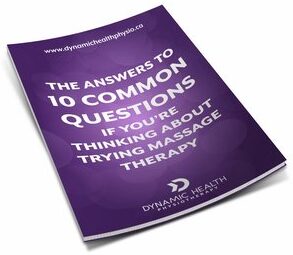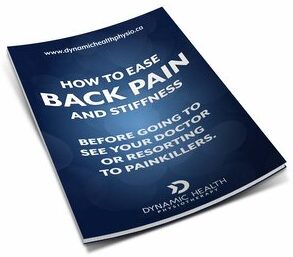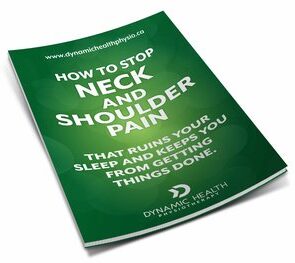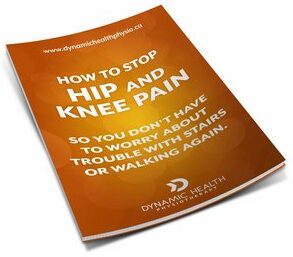- January 10, 2023
DON'T LET ROTATOR CUFF PAIN HOLD YOU BACK: 5 EXERCISES FOR A STRONGER, HEALTHIER SHOULDER
Don't Let Rotator Cuff Pain Hold You Back: 5 Exercises for a Stronger, Healthier Shoulder
Imagine this: you’re putting on your coat to go outside. You put one arm in and then go to slip your other arm into the sleeve… suddenly you have shooting pain in your shoulder as you lift your arm out to the side. It hurts so much that you have to switch arms and put the sore one in first! Does this sound familiar?
Are you tired of struggling with rotator cuff pain that keeps you from enjoying your favorite activities or even just going about your daily routine? If so, you’re not alone. Rotator cuff injuries are a common source of shoulder pain, and they can be frustratingly persistent. Thankfully you don’t have to let rotator cuff pain hold you back! With the right exercises and a little bit of patience, you can build stronger, healthier shoulders and say goodbye to that nagging pain. Here are five exercises that can help:
FIVE EXERCISES TO STRENGTHEN YOUR SHOULDER WITH ROTATOR CUFF PAIN
1. Scaption: Scaption is a great exercise for strengthening the rotator cuff muscles, as well as the deltoids and upper back muscles. To do scaption, stand with your feet shoulder-width apart and hold an anchored theraband at your sides. Lift the theraband out from your sides at a natural, comfortable angle until it is at shoulder height, keeping your elbows slightly bent. Then, lower the theraband back to your sides and repeat for 8-12 pain free reps on each side.

2. External rotation: External rotation is another excellent exercise for strengthening the rotator cuff muscles. To do external rotation, stand with your elbow bent at a 90-degree angle and your upper arm pressed against your side. Holding a theraband in your hand, rotate your arm outward, keeping your elbow pressed against your side. Hold for a moment and then slowly return the theraband back to the starting position. Do 8-12 pain free reps on each side.


4. Rows: The row is a great exercise for strengthening the muscles in your upper back and shoulders. To do a row, stand with your feet shoulder-width apart and hold the ends of an anchored theraband in each hand in front of your body. There should be slight tension on the band already. Pull the theraband straight back to your sides, keeping your elbows close to your body. Return the theraband back to the starting position and repeat for 8-12 pain free reps.

5. Shoulder press: The shoulder press is a classic exercise for building strength in the shoulders and upper body. To do a shoulder press, stand with your feet shoulder-width apart and hold an anchored theraband in each hand at shoulder height with your palms facing forward. Press the theraband up above your head, then lower it back to shoulder height. Do 8-12 pain free reps.

Remember to start slowly and to gradually increase the weight and number of reps as you get stronger. If you have any doubts about your form or if the exercise is appropriate for your individual needs, be sure to talk with your physiotherapist.
OTHER HELPFUL TIPS
Besides these exercises, here are a few other things you can do to help heal and prevent rotator cuff injuries:
Stretch regularly: Stretching can help improve flexibility and range of motion in the shoulder, which can be especially important if you’re recovering from a rotator cuff injury. Some stretches to try include the doorway stretch, the cross-body stretch, and the overhead stretch.
Use good posture: Good posture can help reduce strain on the rotator cuff muscles and prevent injuries. Make sure to keep your shoulders back and down, and to avoid slouching or hunching forward.
Avoid activities that put too much strain on your shoulders: If you’re recovering from a rotator cuff injury or trying to prevent one, it’s important to be mindful of the activities you do that could put strain on your shoulders. This might include heavy lifting, throwing a ball with too much force, or even just sleeping on your shoulder in an awkward position.
Use proper form when lifting: If you do need to lift heavy objects, be sure to use proper form to avoid straining your rotator cuff muscles. Keep the object close to your body, use your legs to lift, and avoid twisting with that heavy load in your hands.
Consider physiotherapy: If you’re struggling with rotator cuff pain or trying to recover from an injury, physiotherapy can be a helpful resource. A physiotherapist can work with you to develop a personalized treatment plan, including exercises and other techniques to help strengthen and heal your shoulders.
CONCLUSION

Have Questions About Massage Therapy

Need some help with your back pain?

Struggling with neck or shoulder pain?
Click the button below to claim your free copy of this neck and shoulder pain tips report!

